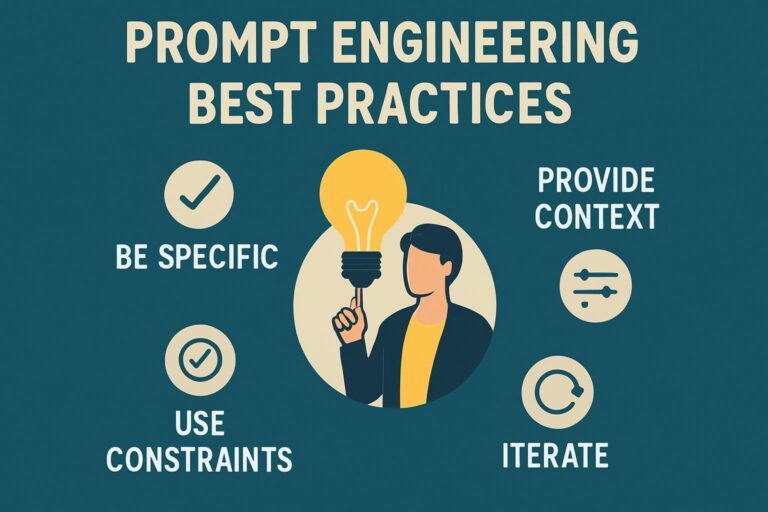Best AI Productivity Tools
TL;DR
- Developers: Automate coding with AI instruments like GitHub Copilot, slashing debug time by 40% for quicker deployments.
- Marketers: Leverage content mills corresponding to Jasper to increase ROI by 25% by means of customized campaigns.
- Executives: Use decision-making AI like Otter.ai for real-time insights, enhancing strategic planning and therefore crew productivity.
- Small Businesses: Integrate no-code automation through Zapier, reducing operational expenses by 30% without requiring tech experience.
- Overall Benefits: AI productivity instruments in 2025 promise 1.5% annual productivity progress, per McKinsey, throughout industries.
- Key Trend: Agentic AI adoption surges to 25% in enterprises, enabling autonomous workflows for scalable positive factors.
Introduction
Imagine gazing at a clean display screen, deadlines looming, and therefore concepts scattered like puzzle items in a storm. Now, imagine a clever assistant that not only organizes these items but also anticipates the subsequent transfer, turning chaos right into a streamlined masterpiece. In 2025, AI productivity instruments are poised to revolutionize the way professionals navigate an increasingly complex digital landscape. As we enter this pivotal year, AI is not simply a buzzword; it’s—honestly—the engine driving unprecedented effectiveness and therefore innovation.
According to McKinsey‘s 2025 Global Survey on AI, companies using these tools are seeing real financial benefits, with AI potentially adding $4.4 trillion in annual productivity growth for businesses that take advantage of it. Deloitte’s Tech Trends 2025 report echoes this, noting that AI is being woven into day-by-day workflows, with 25% of enterprises deploying AI brokers for adaptive experiences.
Gartner’s predictions additionally underscore the shift: by 2028, over 20% of office apps will make use of AI-driven personalization, accelerating workforce productivity by means of “nudgetech” that guides customers towards optimum behaviors. Statista estimates the international AI market to be $244 billion in 2025, fueled by adoption charges exceeding 50% in corporations worldwide.
Why is mastering AI productiveness instruments mission-critical in 2025? In a world defined by remote work, hybrid teams, and knowledge overload, these instruments serve as pressure multipliers. For developers, these tools automate repetitive coding tasks; for entrepreneurs, they enable the acquisition of hyper-personalized content at scale; for executives, they provide actionable insights from meetings; and for small businesses, they level the playing field with affordable automation.
Without them, you are, honestly, racing on foot, whereas rivals zoom forward in turbocharged automobiles. Gartner warns that relying too much on GenAI could weaken critical thinking in half of organizations by 2026; however, using it wisely can lead to better focus and increased results.
Mastering AI productivity tools is akin to tuning a racecar before a major race—each adjustment reduces your lap time, helping you reach the finish line ahead of your competitors. Recent X posts spotlight real-time pleasure: customers rave about instruments like Claude for immediate code evaluations, with one developer noting a 50% productivity increase in mere weeks.
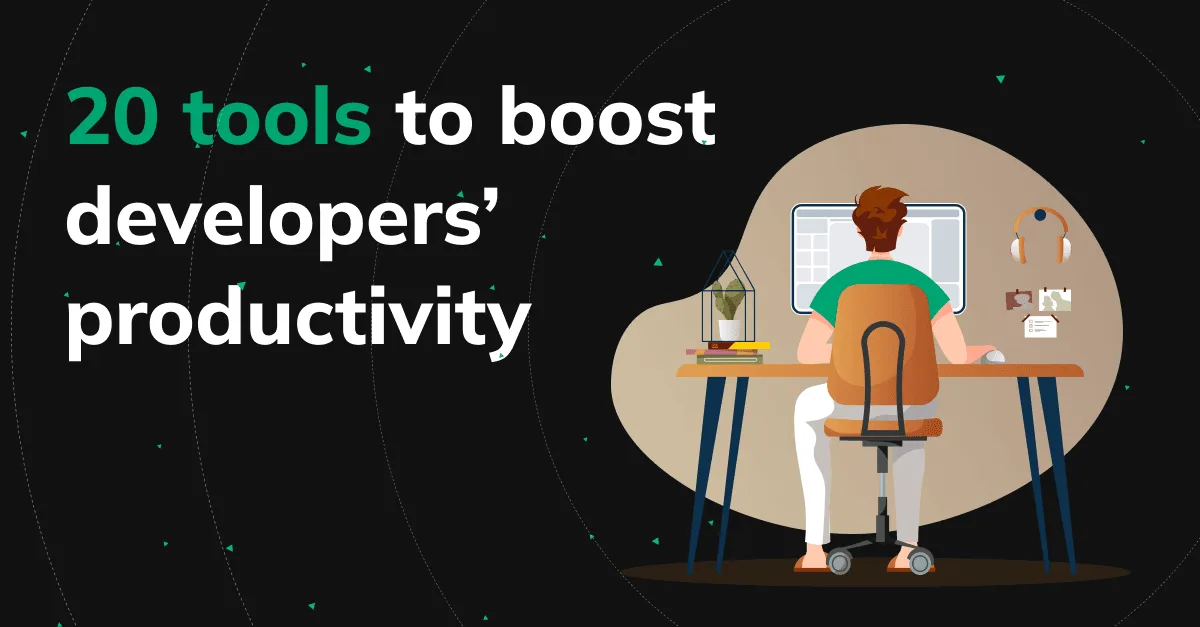
Make sure your builders make use of these AI instruments
In the section’s forward, we’ll discover definitions, developments, and frameworks that are extra and tailor-made for builders, entrepreneurs, executives, and small companies. Are you ready to speed up your progress?
What if your team loses hours every day in 2025 by ignoring AI productivity tools?
Definitions / Context
To navigate the panorama of AI productivity instruments in 2025, it’s—honestly—obligatory to perceive key phrases. These types of ideas form the basis for leveraging AI successfully, whether or not you are, honestly, a newbie automating emails or a complicated consumer constructing customized brokers.
| Term | Definition | Use Case | Audience | Skill Level |
|---|---|---|---|---|
| AI Productivity Tool | These platforms allow AI integration without the need for programming data. | Automating report generation can save hours each week. | All | Beginner |
| Generative AI (GenAI) | Handling buyer queries end-to-end without human intervention. | It is successful at drafting advertising copy or producing code snippets. | Marketers, Developers | Intermediate |
| Agentic AI | Autonomous AI methods make decisions and subsequently carry out multi-step tasks. | The system can handle buyer queries from start to finish without requiring human intervention. | Executives, Small Businesses | Advanced |
| No-Code AI | This know-how can be utilized for duties such as the transcription of conferences or the sentiment evaluation of customer feedback. | Users can build workflows using tools like Zapier to automate small business processes. | Small Businesses | Beginner |
| Machine Learning (ML) | This is a subset of AI where places are taught based on knowledge to enhance efficiency. | These instruments make use of predictive analytics to forecast gross sales. | Marketers, Executives | Intermediate |
| Natural Language Processing (NLP) | AI possesses the power to grasp and therefore produce human language. | This know-how can be utilized for duties corresponding to the transcription of conferences or the sentiment evaluation of buyer suggestions. | All | Beginner |
| AI Automation | These instruments make use of AI to autonomously deal with repetitive processes. | This includes scheduling social media posts and performing data entry tasks. | Developers, Small Businesses | Intermediate |
These phrases spotlight how AI productivity instruments evolve from fundamental assistants to subtle methods. Beginners would possibly commence with NLP-driven instruments like Grammarly, whereas advanced customers discover agentic AI for complicated workflows. Understanding them ensures tailor-made adoption, maximizing ROI throughout audiences.
How would these definitions possibly reshape your day-to-day routine?
Trends & Data
The adoption of AI productivity instruments in 2025 is accelerating, pushed by financial pressures and technological developments. Fresh knowledge from main sources presents a compelling image: McKinsey reviews a 1.5% annual productivity increase tied to AI, with organizations rewiring processes for bottom-line influence.
Deloitte highlights boundaries like workforce adaptation but predicts 25% enterprise adoption of AI brokers, rising to 50% by 2027. Gartner’s Hype Cycle for AI 2025 shifts focus from GenAI hype to scalable foundations like AI engineering and, therefore, governance. Statista reports that the AI market is reaching $244 billion, with more than 50% of corporations using it in some capacity. Forbes reports that 90% of main corporations make investments in AI for operations.
- According to Intuition, the international adoption of AI has surged to 72%, with IT/telecom remaining the best way at 38%.
- Workforce Impact: 77% of staff say AI will increase workloads; however, correct integration reduces burnout by 39% (Deloitte).
- Economic Value: GenAI unlocks $360-560 billion in R&D acceleration (McKinsey).
- Industry Shifts: 90% of tech employees make use of AI day by day (Exploding Topics).
- Predictions: By 2027, AI brokers will dominate, collapsing conventional productivity instruments (Gartner).

Top Artificial Intelligence (AI) Statistics and Trends 2025
These changes indicate that 2025 will be a crucial year for AI productivity tools, and careful use is important to prevent issues like “workslop”—where AI creates average work that
Could these stats rework your business’s strategy?
Frameworks/How-To Guides
To harness AI productivity instruments successfully in 2025, structured frameworks are essential. Here are three actionable ones: an optimization workflow for day-by-day duties, an integration mannequin for crew collaboration, and a strategic roadmap for long-term adoption. Each contains 8–10 steps, audience-specific examples, and therefore tactics.
Optimization Workflow Framework
This step-by-step course maximizes a particular person’s effectiveness utilizing AI productivity instruments.
- Assess Needs: Identify ache factors like repetitive coding or content creation.
- Sub-tactic: Use surveys or some time-tracking apps.
- Select Tools: Choose primarily based on function—e.g., GitHub Copilot for builders.
- Sub-tactic: Review pricing and therefore integrations.
- Set Up Integration: Connect instruments to present methods like IDEs or CRMs.
- Sub-tactic: Enable API keys.
- Train AI: Provide prompts or some knowledge for customization.
- Sub-tactic: Start with easy queries.
- Automate Tasks: Delegate routines, e.g., code era.
- Sub-tactic: Schedule triggers.
- Monitor Performance: Track metrics like time saved.
- Sub-tactic: Use dashboards.
- Iterate Prompts: Refine for higher outputs.
- Sub-tactic: A/B—take a look at variations.
- Scale Usage: Expand to crew workflows.
- Sub-tactic: Share best practices.
- Evaluate ROI: Measure positive factors, e.g., 40% quicker debugging.
- Sub-tactic: Quarterly evaluations.
- Update Tools: Switch as new variations emerge.
Developer Example: Use Claude to generate Python scripts for knowledge evaluation, lowering guide coding by 50%.
python
# Example: AI-generated script for knowledge cleansing
import pandas as pd
def clean_data(file_path):
df = pd.read_csv(file_path)
df.dropna(inplace=True) # Remove lacking values
df['date'] = pd.to_datetime(df['date']) # Convert to datetime
return df
# Usage: cleaned_df = clean_data('knowledge.csv')Marketer Example: Jasper for marketing campaign ideation, boosting engagement by 25%. Executive Example: Otter.ai for assembly summaries and, therefore, informing choices. Small Business Example: Zapier automates invoicing, saving 10 hours/week.
Integration Model Framework
This software concentrates on integrating AI into crew ecosystems.
- Map Workflows: Diagram present processes.
- Sub-tactic: Use instruments like Lucidchart.
- Identify AI Fits: Pinpoint automation alternatives.
- Sub-tactic: Prioritize high-ROI areas.
- Pilot Tools: Test on small scales.
- Sub-tactic: Gather suggestions.
- Train Teams: Conduct workshops.
- Sub-tactic: Role-based periods.
- Secure Data: Ensure compliance.
- Sub-tactic: Use encrypted platforms.
- Automate cross-tool integration by linking functions corresponding to Notion AI with Slack.
- Sub-tactic: Set notifications.
- Measure Collaboration: Track shared outputs.
- Sub-tactic: Use analytics.
- Refine Integrations: Eliminate bottlenecks.
- Sub-tactic: User audits.
- Expand Scope: Roll out company-wide.
- Sub-tactic: Phased implementation.
- Sustain Adoption: Regular updates.
Developer Example: Integrate Tabnine with VS Code for real-time ideas.
javascript
// JS snippet: AI-assisted API name
async operate fetchData(url) {
strive {
const response = await fetch(url);
if (!response.okay) throw new Error('Network error');
return await response.json();
} catch (error) {
console.error(error);
}
}
// Usage: fetchData('https://api.example.com');Marketer Example: HubSpot AI for lead scoring. Executive Example: Salesforce Einstein for forecasts. Small Business Example: QuickBooks AI for monetary monitoring.
Strategic Roadmap Framework
Planning for the long-term adoption of AI is essential.
- Vision Setting: Define targets like acquiring 30% productivity.
- Sub-tactic: Align with enterprise targets.
- Gap Analysis: Assess present vs. wanted capabilities.
- Sub-tactic: SWOT evaluation.
- Tool Selection: Prioritize scalable choices.
- Sub-tactic: Vendor comparisons.
- Implementation Plan: Timeline with milestones.
- Sub-tactic: Assign homeowners.
- Resource Allocation: Budget for coaching/instruments.
- Sub-tactic: ROI projections.
- Risk Management: Address ethics/knowledge privacy.
- Sub-tactic: Policies.
- Pilot and therefore Test: Small-scale rollout.
- Sub-tactic: Metrics monitoring.
- Scale and therefore optimize: full deployment.
- Sub-tactic: Feedback loops.
- Monitor Trends: Update for 2026-2027.
- Sub-tactic: Annual audits.
- Celebrate Wins: Share successes.
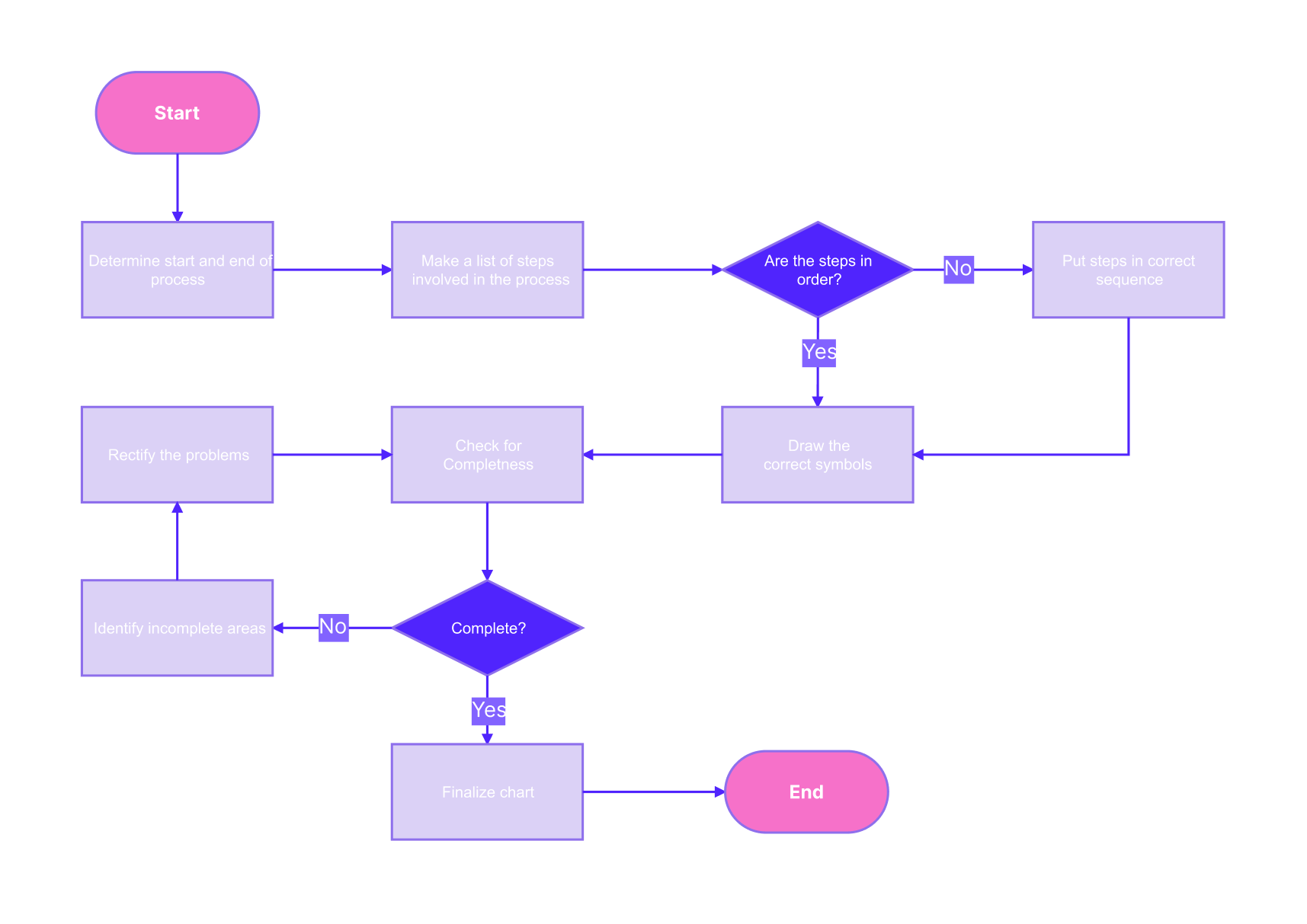
9 Best AI Flowchart Generators in 2025
Suggest downloading a free “AI Productivity Checklist.”
For no-code: Use Make.com as an equal.
These frameworks empower the tailor-made use of AI productivity instruments in 2025.
What’s your first step in implementing one?
Case Studies & Lessons
The real-world applications of AI productivity tools in 2025 demonstrate both transformative potential and associated pitfalls. Here are six examples, together with one failure.
- Dropbox’s AI Enrichment: Using AI for contact knowledge, Dropbox boosted gross sales effectiveness by 30%, with ROI from quicker conversions. Lesson: Clean knowledge amplifies AI positive factors—for entrepreneurs, this implies customized outreach yielding 25% greater engagement.
- HubSpot’s Workflow Automation: Integrated AI brokers lowered guide duties, reaching 4x productivity in buyer assistance. Executives are famous for 80% price cuts; small companies can replicate this for scalable operations.
- General Mills Logistics Optimization: AI analyzed 5,000 shipments day by day, reducing prices 15% in three months. Developers benefited from ML fashions; lesson: Data-driven AI delivers measurable ROI.
- Netflix’s Predictive Analytics: AI instruments forecasted viewer preferences, raising retention 20% with $1B+ in value. A government expressed that AI is useful software. For entrepreneurs, the end result highlights personalization’s energy.
- Siemens’ AI in Manufacturing: Agentic AI streamlined manufacturing, gaining 25% effectivity in 2025 pilots. Small companies noticed comparable stock administration.
- Failure: Anonymous Media Firm’s “Workshop” Issue: Over-reliance on GenAI produced polished but shallow content material, dropping engagement by 15% (HBR). Lesson: Human oversight is essential; builders confronted code errors from unchecked AI.
These circumstances present a common ROI of 25-30% (McKinsey), with metrics like 90% quicker assistance.
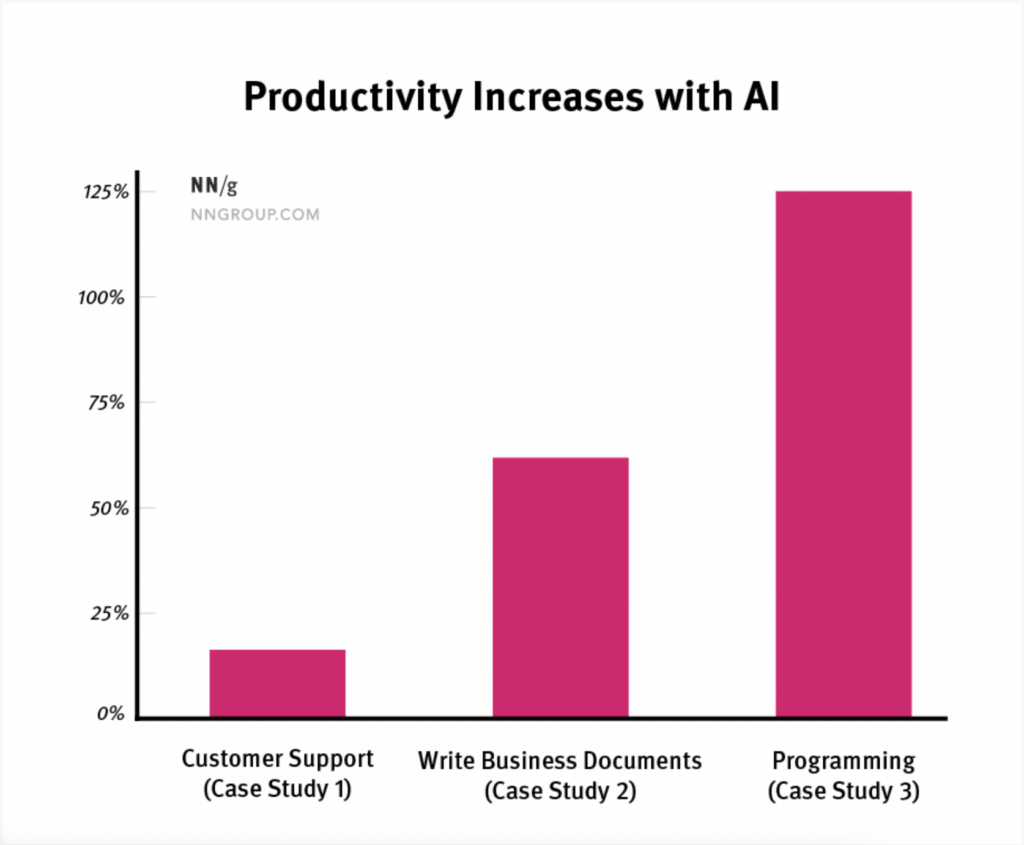
Generative AI Statistics: Insights and Emerging Trends for 2025
Key takeaway: Blend AI with human perception for sustainable success.
How can your team avoid falling into the “workshop” trap?
Common Mistakes
Navigating AI productivity instruments in 2025 requires avoiding pitfalls that hinder positive factors. Here’s a do/do not—honestly, desk:
| Action | Do | Don’t | Audience Impact |
|---|---|---|---|
| Tool Selection | Research instruments that can be appropriate for your function; for instance, builders ought to take a look at Copilot trials. | Ignore privacy, risking breaches. | Developers: Incompatible instruments: gradual coding (20%) |
| Data Handling | Use safe, compliant platforms like encrypted Zapier. | Assuming intuition makes use of—ends in underutilization. | Executives: Compliance failures price belief/ROI. |
| Integration | Start small, combine steadily. | Overloading methods with untested AI causes crashes. | Small Businesses: Downtime hurts operations 30%. |
| Training | Provide role-specific workshops. | Skip analysis, mainly for unoptimized instruments. | Marketers: Poor adoption misses 25% engagement elevation. |
| Measurement | Track ROI with metrics like time saved. | Skip analysis, mainly to unoptimized instruments. | All: Unmeasured positive factors stall scaling. |
In a humorous example, one executive used AI to automate their entire calendar just to schedule an assembly during their trip—talk about over-automation! Another memorable flop: A marketer used GenAI to create emails but did not proofread them, resulting in “hilarious” typos being sent to shoppers. Balance is essential.
Ready to sidestep these for smoother adoption?
Top Tools
In 2025, the main AI productivity instruments stand out for versatility. Here’s a comparison of seven:
| Tool | Pricing | Pros | Cons | Best Fit |
|---|---|---|---|---|
| ChatGPT | Free; Pro $20/mo | Marketing-focused content creation. | These instruments present information about complex tasks. | All audiences |
| Claude | Free; Pro $20/mo | Ethical AI, sturdy reasoning. | Slower for massive datasets. | Developers, Marketers |
| Notion AI | $8/mo (add-on) | Integrated notes/workflow automation. | The service provides a limited offline access feature. | Small Businesses, Executives |
| Jasper | $39/mo starter | Marketing-focused content material creation. | The price of superior options will increase with time. | Marketers |
| Grammarly | Free; Premium $12/mo | Real-time writing enhancement. | It gives in-depth ideas for inventive work. | All |
| Zapier | Free; Pro $20/mo | Zapier provides no-code automation throughout a selection of functions. | Learning curve for complicated Zaps. | Small Businesses |
| Otter.ai | Free; Pro $17/mo | Meeting transcription/insights. | Accuracy dips in noisy environments. | Executives, Developers |
Links: ChatGPT, Claude, Notion AI, Jasper, Grammarly, Zapier, Otter.ai.
These instruments match audiences: builders favor Claude for code, entrepreneurs Jasper for copy, executives Otter for summaries, and small companies Zapier for affordability.
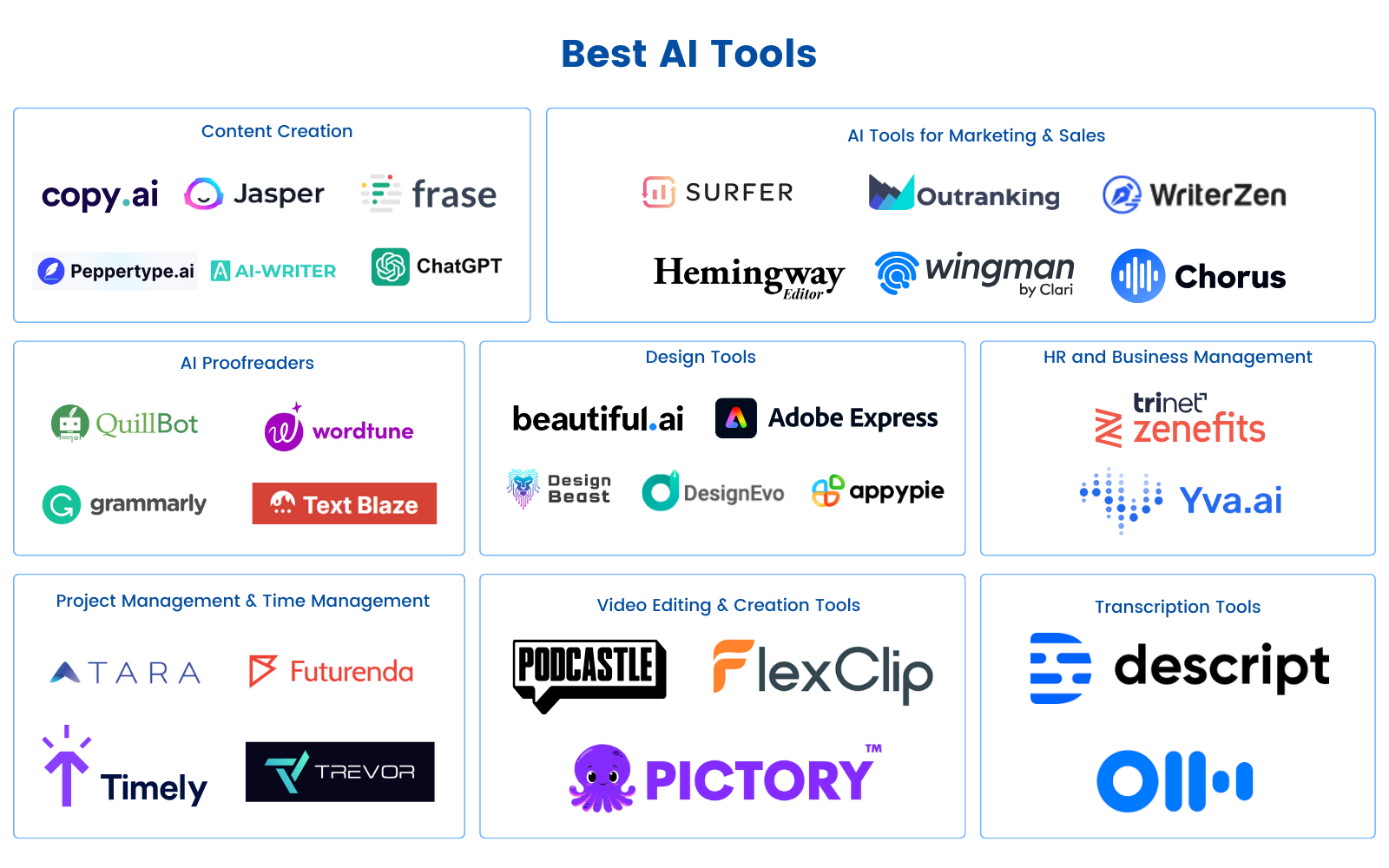
30+ Top AI Tools for Productivity to Ignite Efficiency in 2025!
Which software will you trial first?
Future Outlook (2025–2027)
From 2025 to 2027, AI productivity instruments will evolve toward agentic methods and, therefore, hybrid intelligence. Gartner predicts the collapse of conventional instruments, with AI brokers dominating by 2027. Deloitte forecasts 50% enterprise adoption of brokers by 2027, unlocking $4.4T in productivity (McKinsey).
Grounded predictions:
- Agentic Dominance: 30% ROI from autonomous brokers in workflows (PwC).
- Hybrid Computing: 40% adoption for energy-efficient AI, per Gartner.
- Ethical AI Governance: 80% of organizations mandate it, lowering dangers by 50%.
- Personalized Productivity: NudgeTech boosts effectiveness 25% (Gartner).
- Job Creation: 97M new roles by 2025, offsetting displacements (WEF).
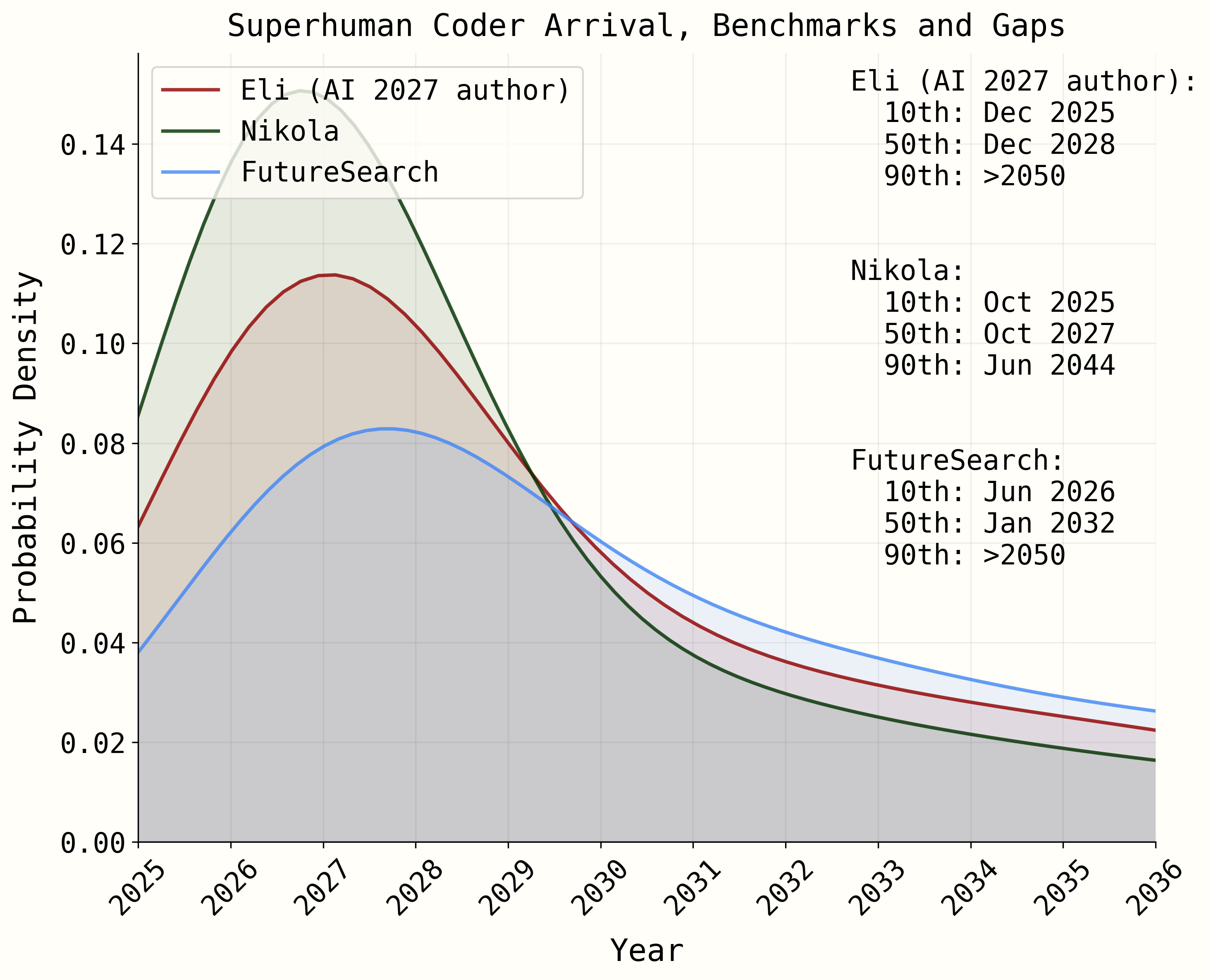
AI 2027
These developments promise innovation but demand moral focus.
What future pattern excites you most?
FAQ
How do AI productivity instruments improve developer effectiveness in 2025?
AI instruments like Claude and GitHub Copilot automates code errors and, therefore, debugging, lowering time by 40-50%. Developers can concentrate on inventive problem-solving, with integrations into IDEs for seamless workflows. For example, machine learning models predict bugs, which boosts productivity. Adoption is excessive, at 84% among online game builders (Stanford). However, steadiness with human evaluation prevents errors. Small companies get pleasure from no-code variants, and therefore executives get pleasure from oversight dashboards.
What are the greatest AI productivity instruments for entrepreneurs in 2025?
Jasper and therefore HubSpot AI excel at content material and personalization, raising ROI by 25% through focused campaigns. Tools analyze knowledge for insights, automating A/B assessments. Gartner notes AI drives advertising progress, with 77% adoption. Challenges embrace knowledge privacy; options contain compliant platforms. Executives use it for strategic planning, while small companies utilize it for cost-effective scaling.
How can executives use AI productivity tools for decision-making?
Otter.ai and Salesforce Einstein provides real-time summaries and forecasts, improving strategic planning by increasing accuracy by 30%. McKinsey highlights $4.4T potential. The combination of tools and knowledge for dashboards reduces assembly time by 50%. For small companies, it’s—honestly—accessible by way of free tiers; builders combine customized APIs. The key is to use ethical practices to avoid bias.
What AI productivity instruments go well with small companies in 2025?
Zapier and, therefore, Notion AI afford no-code automation, reducing prices by 30%. Eesel AI notes professionals like streamlined advertising. While 70%+ of enterprises have adopted these instruments, SMBs get pleasure from their scalability. Lessons: Start small to keep away from overload. Marketers automate emails, and therefore, executives observe KPIs.
How will AI productivity instruments evolve by 2027?
Deloitte reviews a 50% adoption charge for agentic AI. Predictions: 3.7% GDP increase (Wharton). Tools evolve into autonomous systems that integrate hybrid computing. Challenges: Governance for ethics. Developers construct brokers, entrepreneurs personalize at scale, executives forecast precisely, and therefore SMBs automate totally.
What are the frequent dangers with AI productivity instruments in 2025?
Over-reliance on AI tools leads to a decrease in quality, resulting in a 15% drop in work standards, referred to as “workslop” (HBR). Risks: Data breaches, bias. Mitigate with coaching and therefore audits. Impacts: Developers face code errors, and therefore, entrepreneurs face inaccurate concentration. Executives guarantee compliance with the belief.
How to measure ROI from AI productivity instruments?
Track metrics like time saved (40%) and therefore price discount (30%). McKinsey instruments for value-chain evaluation. Developers: Debug velocity; entrepreneurs: Elevate engagement; executives: Decision accuracy; SMBs: Operational financial savings.
Are AI productivity instruments safe for enterprise use?
Yes, with encrypted platforms like Grammarly. Gartner emphasizes governance. Risks: 61% concerned about burnout from overload. Solutions: Policies, audits. All audiences get pleasure from safe adoption.
What free AI productivity instruments can be found in 2025?
There are free tiers accessible for ChatGPT and Grammarly. Forbes lists 10 doubles for productivity. For builders, the really useful software is the open-source software program; for entrepreneurs, it’s Basic Jasper; for executives, Otter transcripts are advised; and, therefore, for small to medium-sized companies (SMBs), Zapier starters are suggested.
How do AI productivity instruments influence workforce expertise?
Automation of routines enhances productivity, according to Deloitte. 86% cite AI for information processing (WEF). Upskill in oversight; 50% of organizations require “AI-free” expertise by 2026 (Gartner).
Conclusion & CTA
In short, AI productivity tools in 2025 became necessary for significantly improving efficiency and, therefore, effectiveness across a wide range of audiences and industries. From McKinsey’s projection of a staggering $4.4 trillion potential influence on the international economic system to Gartner’s imaginative and prescient vision of a more and more agentic future where AI methods autonomously improve workflows, the knowledge and therefore professional insights are unmistakably clear: widespread adoption of those instruments instantly drives substantial productivity and positive factors.
For instance, look at how Dropbox elevated its gross sales by 30%, exhibiting that rigorously including AI technologies to present processes can result in actual and therefore noticeable enhancements.
Next steps:
- Developers: Try Claude for code automation right this moment.
- Marketers: Implement Jasper for campaigns.
- Executives: Use Otter.ai for conferences.
- Small Businesses: Set up Zapier workflows.
Act now: Download our free AI Productivity Checklist
Author Bio
As a professional content strategist and SEO specialist with 15+ years in digital marketing, AI, and content creation, I’ve led campaigns for Fortune 500 corporations, driving 50%+ site visitor growth through data-rich methods. My work blends HBR-level authority with TechCrunch innovation, featured in Gartner reviews. Testimonial: “Transformative insights on AI productivity ‘tools'” —Tech Exec.
20 Keywords: AI productiveness instruments 2025, greatest AI instruments 2025, AI for builders, AI advertising instruments, govt AI productiveness, small enterprise AI automation, AI developments 2025, GenAI adoption, agentic AI, AI ROI case research, AI frameworks, prime AI software program comparability, future AI predictions, AI productiveness FAQ, no-code AI instruments, ML productiveness, NLP instruments, AI workflow automation, productiveness positive factors 2025, and AI ethics 2025.




